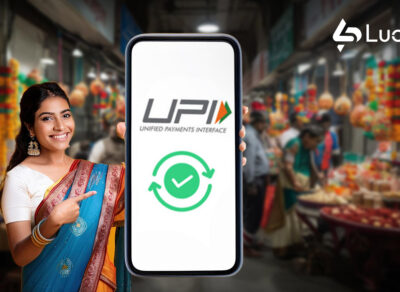Lowering Transaction Costs: UPI’s Affordable Solution for Small Businesses and Consumers

Today, the ability to execute financial transactions quickly, securely, and affordably is essential. For years, businesses and consumers alike have had to navigate the complexities and high costs associated with traditional banking methods and other digital payment systems. However, the advent of the Unified Payments Interface (UPI) has transformed this landscape, offering a simpler, more efficient solution with transaction fees that are significantly lower than its predecessors.
Let’s take a closer look at how UPI is making waves by lowering transaction costs and why it is increasingly becoming the preferred choice for small businesses, startups, and consumers across India.
1. Breaking Down the Cost Barrier for Small Businesses
One of the greatest challenges faced by small businesses and startups has always been the cost of payments. Whether it’s merchant fees for card payments or the charges associated with digital wallets, these costs can quickly add up, eating into profits and stifling growth. UPI, on the other hand, provides an affordable alternative with minimal transaction fees.
Unlike traditional banking systems or credit card processors that impose hefty fees for every transaction, UPI enables businesses to make payments with very low charges. This reduction in transaction costs allows small businesses to allocate resources to more critical areas like marketing, product development, or hiring talent, helping them scale without worrying about excessive payment processing costs.
2. The Low-Cost Advantage of UPI Over Traditional Payment Methods
Historically, banks and card networks have charged businesses a significant fee for processing payments. These fees often range from 1-3% of the transaction amount, which can be substantial, especially for businesses with high transaction volumes. Furthermore, hidden fees, annual charges, and foreign transaction fees can quickly add up for businesses and consumers who rely on traditional banking and digital payment systems.
In contrast, UPI’s transaction fees are far more reasonable. It has no hidden fees and offers both interbank and intrabank payments at affordable rates. The government’s push to promote UPI as a tool for financial inclusion and growth has made it an attractive option, particularly for smaller enterprises that need to reduce operational costs without compromising on payment efficiency.
3. Boosting Consumer Spending Power
While small businesses benefit from UPI’s low-cost payments, the system also brings significant advantages to consumers. For the average user, UPI transactions are free or incur a minimal fee, making it the most affordable payment solution available.
For consumers, the ability to send and receive money instantaneously—without the burden of heavy transaction charges—has empowered them to participate more fully in the digital economy. Whether they’re paying for groceries, utility bills, or online shopping, UPI provides a quick, hassle-free solution that doesn’t eat into their financial resources.
This affordability has driven a surge in UPI adoption across the country, especially in smaller cities and rural areas. As more consumers shift to digital payments, they’re experiencing the benefits of lower transaction costs while helping to accelerate the adoption of cashless transactions across India.
4. Eliminating Transaction Fees for Peer-to-Peer Transfers
Another significant advantage of UPI is the ability to make peer-to-peer (P2P) transfers with minimal costs. In the past, individuals sending money to family members or friends often had to pay substantial fees, especially if the transfer was international. UPI, however, has removed these barriers by offering a seamless and low-cost solution for domestic transfers, making it easy for individuals to send money across India at virtually no cost.
The ability to send money without the worry of high transaction fees has made UPI the go-to solution for millions of users, whether they’re paying for goods and services or simply transferring money to loved ones. By reducing the friction and cost of P2P transfers, UPI has become an integral part of everyday life for many Indians.
5. Encouraging Greater Financial Inclusion
UPI’s low-cost structure has been a significant driver of financial inclusion in India. For millions of unbanked or underbanked individuals, access to affordable banking services has traditionally been out of reach. High transaction fees and the complexity of traditional banking systems have kept many from engaging with digital financial services.
UPI has turned this model on its head by offering low-cost, accessible solutions for all. With UPI’s integration into various mobile apps, digital wallets, and banking platforms, it has empowered individuals, even in rural areas, to make payments and access financial services in a manner that was previously not possible.
6. A Catalyst for Digital Payments in the Indian Economy
India is rapidly transitioning towards a digital-first economy, and UPI has played a crucial role in this transformation. By eliminating costly intermediaries, reducing transaction fees, and offering a user-friendly interface, UPI has become the cornerstone of India’s digital payments ecosystem.
From large enterprises to small businesses and everyday consumers, UPI’s affordability has encouraged widespread adoption and use, helping to drive the country’s cashless revolution. The simplicity and cost-effectiveness of UPI have made it a preferred choice for millions, contributing to the growth of the digital economy.
The introduction of UPI has not only simplified the way payments are made but has also dramatically reduced the cost of transactions for businesses and consumers. By offering low fees, easy access, and enhanced convenience, UPI has empowered millions to embrace digital payments without the burden of high transaction charges.
For small businesses, startups, and consumers alike, UPI represents a new era of financial transactions—one that is accessible, affordable, and efficient. As India continues to embrace a cashless society, UPI will remain at the forefront of this movement, ensuring that digital payments remain within reach for all.
If you haven’t yet embraced UPI for your business or personal transactions, now is the time to take advantage of its low-cost benefits. With UPI, you can be part of the next wave of India’s digital payments revolution.



